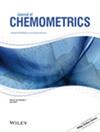Evaluation of Annual Storage on Online Released Compounds in Artemisia argyi Smoke With GC-MS-Based Untargeted Metabolomics Coupled With Chemometric Method of AntDAS-GCMS
Abstract
Artemisia argyi smoke, generated from the combustion of A. argyi, is widely utilized in traditional Chinese medicine for moxibustion and fumigation therapies. The released smoke during the combustion of A. argyi is rich in massive compounds and can be affected by storing periods. However, there is a lack of a comprehensive understanding on the chemical composition of released smoke, and the effects of annual storage on the released smoke were still unclear. Herein, a strategy that integrated chromatography–mass spectrometry (GC-MS) with advanced chemometric software, AntDAS-GCMS, was developed for comprehensively characterizing tens of compound in the released smoke of A. argyi and evaluating the quality variation across annual storage periods. Both particle and gas phases of the released smoke during the combustion were collected for GC-MS analysis; the raw data files were then imported to our recently developed data analysis software AntDAS-GCMS for automatically retrieving underlying components. Components that show significant difference among annual storage periods were screened to provide a total of 471 components. Finally, 61 compounds were identified. Both supervised and unsupervised chemometric methods suggest that the 2- and 4-year storage periods were close to clinic used sample (3-year storage), whereas a too short storage (like 1 year) or too long storage (6 years) were quite different from the 3-year storage samples. In conclusion, this strategy provides a novel solution for evaluating smoke samples from traditional Chinese medicine.




 求助内容:
求助内容: 应助结果提醒方式:
应助结果提醒方式:


